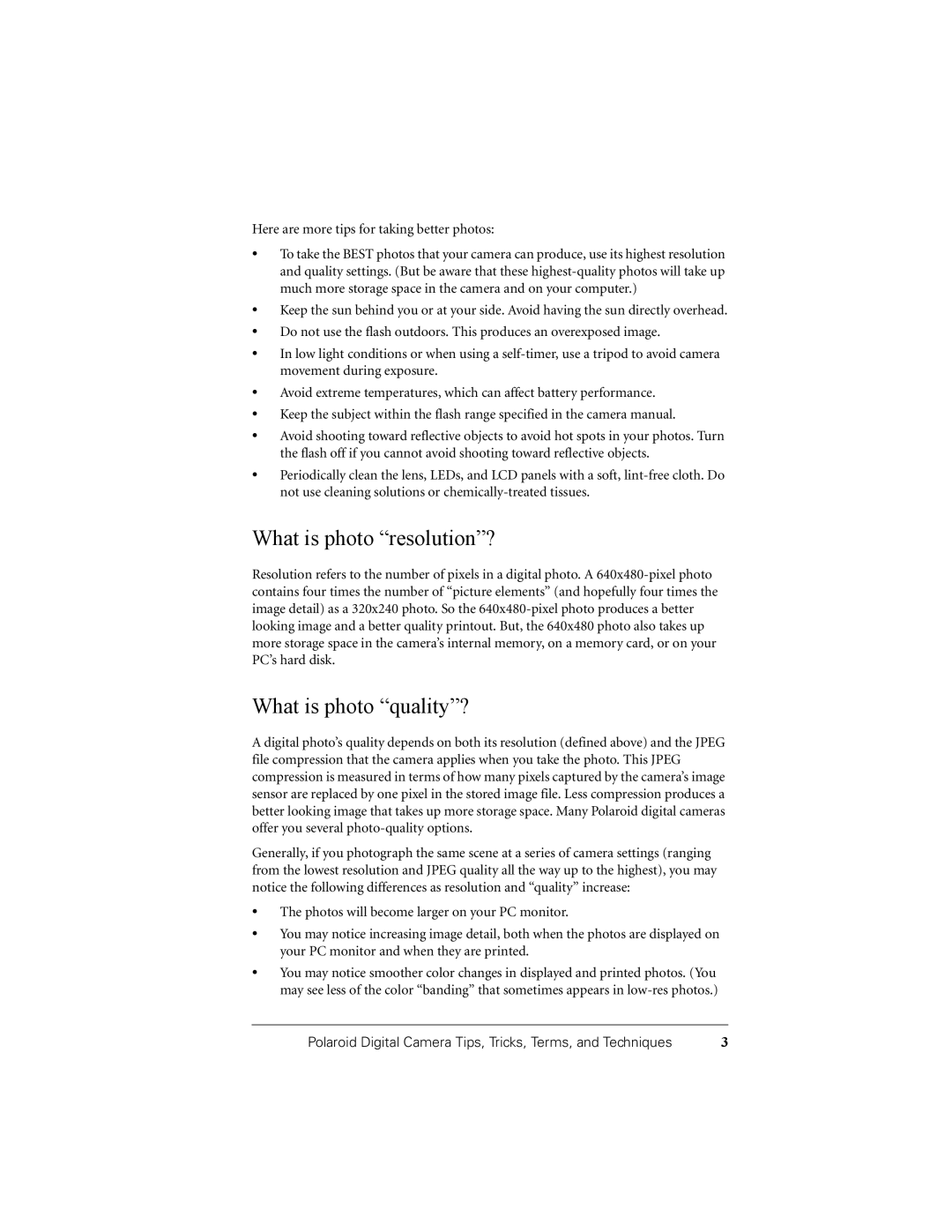Here are more tips for taking better photos:
•To take the BEST photos that your camera can produce, use its highest resolution and quality settings. (But be aware that these
•Keep the sun behind you or at your side. Avoid having the sun directly overhead.
•Do not use the flash outdoors. This produces an overexposed image.
•In low light conditions or when using a
•Avoid extreme temperatures, which can affect battery performance.
•Keep the subject within the flash range specified in the camera manual.
•Avoid shooting toward reflective objects to avoid hot spots in your photos. Turn the flash off if you cannot avoid shooting toward reflective objects.
•Periodically clean the lens, LEDs, and LCD panels with a soft,
What is photo “resolution”?
Resolution refers to the number of pixels in a digital photo. A
What is photo “quality”?
A digital photo’s quality depends on both its resolution (defined above) and the JPEG file compression that the camera applies when you take the photo. This JPEG compression is measured in terms of how many pixels captured by the camera’s image sensor are replaced by one pixel in the stored image file. Less compression produces a better looking image that takes up more storage space. Many Polaroid digital cameras offer you several
Generally, if you photograph the same scene at a series of camera settings (ranging from the lowest resolution and JPEG quality all the way up to the highest), you may notice the following differences as resolution and “quality” increase:
•The photos will become larger on your PC monitor.
•You may notice increasing image detail, both when the photos are displayed on your PC monitor and when they are printed.
•You may notice smoother color changes in displayed and printed photos. (You may see less of the color “banding” that sometimes appears in
Polaroid Digital Camera Tips, Tricks, Terms, and Techniques | 3 |
